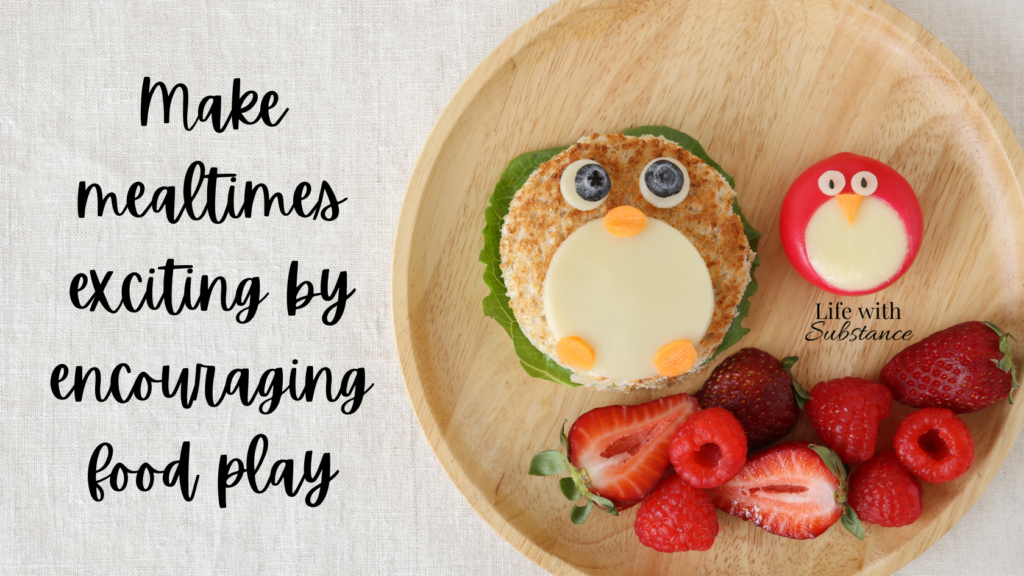This post may contain affiliate links. If you shop from one of our links, we may earn a commission.
As a parent, we all want our children to eat a healthy and balanced diet. However, this can become a challenge when you have a picky eater on your hands. Sneaking vegetables into food has become a popular tactic for parents to ensure their children get plenty of nutrient-rich foods. But is this method really a good idea? The debate on whether it’s okay to hide vegetables in kids’ food has been ongoing, with passionate arguments on both sides. Let’s figure out if this is really acceptable.
Understanding Why Kids Reject Vegetables
Understanding why kids reject vegetables is essential in finding effective ways to incorporate them into your child’s meals. One of the main reasons is that children tend to have a natural aversion to new foods, especially those that have a strong taste or texture. Vegetables, with their diverse flavors and textures, can be intimidating for young children. Additionally, many children are sensitive to bitter flavors, which are often found in vegetables like broccoli or Brussels sprouts. Children tend to prefer sweeter foods, and vegetables often don’t fit into this category.
Another reason why kids reject vegetables is that they may have had negative experiences with them in the past. Whether it’s a particularly unpleasant encounter with a raw veggie or feeling forced to eat them, these negative associations can make them hesitant to try vegetables again.
Imagine this…
Imagine you were invited to a friend’s house for a dinner party. They asked you if there was anything you didn’t like so they could ensure you had a meal you enjoyed. Feeling respected and well-cared for, you let them know that you have an aversion to fish.
On the night of the dinner party, you excitedly sit down at the dinner table to eat a meal made with you in mind. After finishing the meal, the host goes on to tell you that in order to help you learn to like fish, she mixed it into the main meal. Suddenly you are overwhelmed with emotions – frustration, lack of trust, and confusion.
This same scenario occurs frequently when we sneak veggies into our kid’s food. We wouldn’t expect them to react any differently than we did at the dinner party.
Reasons Not to Hide Vegetables in Food
While sneaking vegetables into your child’s food may seem like a great way to increase vegetable consumption, there are some compelling reasons to consider stopping this practice.

Prevents sensory opportunities
Trying to hide vegetables doesn’t address the underlying issue of your child’s aversion to veggies. By disguising them, you’re missing out on the opportunity to help your child develop a taste for and become familiar with the texture of these nutritious foods.
Inadequate vegetable intake
Relying solely on hidden vegetables may lead to a false sense of security that your child is getting enough vegetables in their diet. It’s important to continue offering whole, cooked, or fresh vegetables as well as to expose your child to a variety of tastes and textures. By only sneaking vegetables into their food, you may inadvertently limit their exposure to a variety of other veggies and hinder their willingness to try them in the long run.
Vegetables are typically the food group that our culture fixates on as a critical food. Keep in mind, that fruits still offer a variety of essential vitamins and minerals. While it’s good for kids to enjoy vegetables, they won’t suddenly have a nutrient deficiency if they don’t consume them. They can still have a balanced diet when they eat a variety of other foods.
Creates distrust
It never fails that one of the vegetables will remain undisguised and your child will find it. At this point, your child will likely push the food away and most certainly remember this experience the next time you make the item. They may even refuse the whole plate for fear that you have tampered with other items without their knowing. In an attempt to encourage them to eat more, they may choose to eat less.
Lack of willingness to try new foods outside of the house
Whether it’s when they move out of the house when they are 18, or when they head to a friend’s house when they’re 10, they will eventually leave your house and home-cooked meals. As parents, we can help offer vegetables in different ways to help them feel comfortable around these items when they eat elsewhere. Whether they choose to eat it or not, they can at least feel comfortable with it touching their plate or other food.
Creates confusion around sweets
Sneaking veggies into baked goods…I’m sure we’ve all done it. As a registered dietitian I am not opposed to trying to enhance the nutrition in foods. But when you do, ask yourself, are you doing this because you are fearful of your child consuming too much sugar? Or is it because you enjoy the taste of that item better when veggies are mixed in? If you are choosing to alter the sweet treat for fear of sugar, you are sending the message to your child that desserts are bad and should only be consumed if made with healthy ingredients. There is nothing wrong with allowing occasional sweets within your child’s diet. If anything it helps them to have a healthier relationship with these types of food later in life. Find out more here.
Alternative Strategies for Encouraging Veggie Consumption
Here are some alternative strategies for encouraging veggie consumption that don’t include sneaking vegetables into food. While it can be effective to hide vegetables, it’s important to consider other approaches that promote transparency and a positive relationship with vegetables.
Meal Planning
One alternative strategy is to involve your child in the meal planning and preparation process. Invite your child to the grocery store to pick out some vegetables to try. Let them choose which vegetables to include in a stir-fry. Giving them a role in washing and chopping the veggies can make it a fun and interactive experience. By giving them a say in what vegetables are being used and allowing them to participate in the cooking process, they may feel more invested in the meal and more willing to try the vegetables.

Offer vegetables in their natural form
Another strategy is to gradually introduce vegetables in their natural form rather than hidden in a casserole. Start by offering small portions of a vegetable alongside their favorite food or other familiar dishes. Serving small pieces of only 1-2 bites at a time can reduce the feeling of overwhelm. Be playful at meal times. Ask them how it feels on their lips or if they can make fun shapes with them on their plate. Offer condiments and ask them to “paint” designs on their plate using the vegetables. All of these options provide exposure to vegetables in a non-threatening way. Slowly increase the amount and variety of vegetables over time, ensuring that the flavors and textures are palatable for their taste buds. By exposing them to different vegetables in a non-covert manner, you are allowing them to explore and develop their preferences.
Be a veggie role model
Children are more likely to try new foods when they see their parents or caregivers enjoying them. Make sure to eat a variety of vegetables in front of your child and express how delicious they are. Talk to your child about what you experience when you eat that item using your five senses – how does it taste, smell, feel, look, and sound when you bite into it? This also helps provide language to what they observe in their eating experience.
Make vegetables fun
Additionally, make vegetables fun! Get creative with how you present them. Use cookie cutters with vegetables to create fun shapes or arrange them into smiley faces on their plate. By making vegetables visually appealing and enjoyable, you can pique their interest and make eating them a positive experience.
Remember, every child is different, and what works for one may not work for another. It may take some trial and error to find the best strategies for your picky eater. The key is to remain patient, persistent, and creative in your approach.

How to Add Veggies without Deception
Instead of trying to hide vegetables completely, consider blending them into dishes like soups, sauces, and dips. For example, puree steamed cauliflower in a food processor and add it to mashed potatoes, mix carrots into spaghetti sauce, or blend spinach into a fruit smoothie. This way the vegetable flavors are still present, but in a more subtle way. By incorporating the vegetable tastes in their favorite meals, you can slowly acclimate their taste buds to these flavors without overwhelming them.
However, let your child know what you put in their meal so they don’t feel deceived. Adding vegetables into dishes or baked goods is perfectly fine as long as you keep your child in the loop. On the flip side, if your child likes the food while knowing it includes vegetables, they may be more willing to try that veggie in its natural form the next time.
Picky Eating Utensils
Sometimes all it takes is using a fun utensil when eating to encourage trying an unwanted food. This is especially helpful for picky kids who may feel apprehensive about trying new things. One of the best ways to encourage my kids to open up to eating veggies is by serving it with a fun feeding utensil, or plate, or cutting it into fun shapes. Here are some favorite accessories at our home: Ms. Food Plate, vegetable cookie cutters, mini hand tongs, and animal picks.
In Summary
As parents, it’s completely normal to be concerned about whether your child is consuming adequate amounts of vegetables. As a result, we find sneaky ways to get our fussy eaters to even try a vegetable as a short-term solution. While it’s not wrong to incorporate vegetables into meals, just be sure to let your child know what vegetables you included. By doing so, you are helping build a trusting feeding relationship.

